#ellen wagner
Explore tagged Tumblr posts
Text
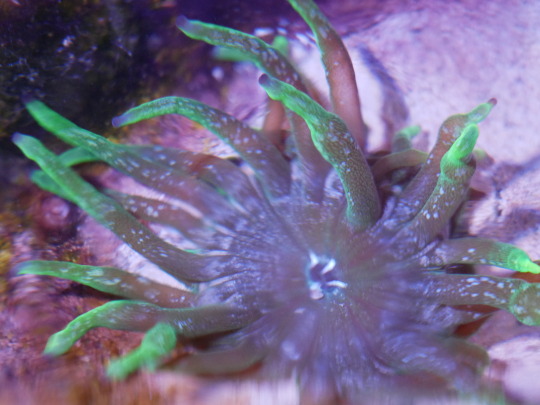
Diskussion zu "Triff das Riff! – Perspektive Kunst"
Looking for Medusa
Gespräch mit Katharina Hoppe, Florian D. Schneider und Julia Katharina Thiemann
13. Januar, 19.00 Uhr Treffpunkt: Haupteingang des Naturmuseums Die Teilnahme ist kostenfrei
Für die künstlerische Intervention „Looking for Medusa“ verknüpfen Linda Weiß und Nina M.W. Queissner natur- und kultur-wissenschaftliche Recherche, um sich dem Lebensraum der Korallen anzunähern. Das Gespräch mit der Soziologin Katharina Hoppe, der Kunstwissenschaftlerin und Kuratorin Julia Katharina Thiemann sowie dem Biologen Florian Schneider widmet sich nun der Frage, wie unterschiedliche Wissensformen, vor allem im Medium der Kunst, zusammenkommen können.
Mit welcher Wirkung können sie gemeinsam Themen vermitteln? Wie kann es gelingen, Lebensräume erfahrbar zu machen, die sich der menschlichen Wahrnehmung entziehen? Welche kuratorischen Strategien gibt es, um Wissenschaft und Imagination zu verbinden? Und welche Bedeutung kommt dem transdisziplinären Austausch dabei zu? Das Gespräch findet in Anwesenheit der Künstlerinnen und Kuratorinnen statt.
Bildinformation: Nina M. W. Queissner und Linda Weiß, Looking for Medusa, 2023, Detail, Foto: Nina M.W. Queissner
Anmeldung über https://museumfrankfurt.senckenberg.de/de/kalender/#undefined erforderlich
#senckenberg museum#nina m w queissner#linda weiß#ellen wagner#triff das riff#looking for medusa#corals#climate change#biodiversity
2 notes
·
View notes
Text
youtube
2 notes
·
View notes
Text
6 notes
·
View notes
Text
By Rachel May
Rachel May, English professor and author, came upon Elizabeth Wagner Reed’s book about a decade ago, on Reed’s daughter’s website.
Published April 22, 2023Updated April 24, 2023, 10:50 a.m. ET
This article is part of Overlooked, a series of obituaries about remarkable people whose deaths, beginning in 1851, went unreported in The Times.
In 1992, the geneticist Elizabeth Wagner Reed self-published “American Women in Science Before the Civil War,” a book highlighting 22 19th-century scientists. One of them was Eunice Newton Foote, who wrote a paper on her remarkable discovery about greenhouse gases, “a phenomenon which is of concern to us even now,” Reed wrote.
Foote was forgotten soon after the paper was read aloud by a male scientist at a conference in 1856 and published the following year. A male scientist was eventually credited with the discovery.
Like Foote, Reed herself fell into obscurity, a victim of the erasure of female scientists that the historian Margaret Rossiter coined the Matilda Effect — named for the sociologist Matilda Joslyn Gage, whose 1870 pamphlet, “Woman as Inventor,” condemned the idea that women did not have the skills to succeed in the field.
Reed, however, made significant contributions to the sciences.
She wrote a landmark study about intellectual disability genetics, helped found a field of population genetics and wrote many more papers on botany, the biology of women and sexism in science.
Reed persisted in her research even when she found herself a widow with a toddler during World War II. By the time of her death, in 1996, in spite of publishing more than 34 scholarly papers, public school curriculums and two books, the record didn’t bend in her favor. It wasn’t until 2020, when the scientist and scholar Marta Velasco Martín published a paper on Reed, that her legacy was resurrected.
Reed was born Elizabeth Wagner on Aug. 27, 1912, in Baguio, in what was then called the Philippine Islands, to Catherine (Cleland) and John Ovid Wagner. John was from Ohio and worked in construction there at the time; Catherine, from Northern Ireland, was working in the Philippines as a nurse.
The family later settled on a farm in Ohio, where Elizabeth grew up picking raspberries “from dawn to dusk,” her son William Reed said in a phone interview.

“She learned how to work really hard,” he added. “I remember her saying how much she loved school, partly because it wasn’t doing farm work.”
At the end of one summer, he said, she used some of her earnings to buy a book about wildflowers in Ohio — “her first purchase was a scientific book.”
She would go on to cultivate wildflowers in her backyard as an adult, volunteer at a wildflower arboretum in Minnesota and write about botany in scientific articles and in educational materials for children. Reed’s daughter, Catherine Reed, told Martín that her mother “loved nature, especially plants, and, wanted to be a scientist from a very early age.”

In 1933, Reed earned her bachelor’s degree at Ohio State University, where she also earned a master’s in 1934 and a Ph.D. in plant physiology in 1936. She put herself through school with a scholarship and by washing dishes and working in the cafeteria. In 1939 and 1940, she published her first two papers, one about the effects of insecticides on bean plants and the other about how various types of dusts affect the rate of water loss in yellow coleus plants by night and day.
In 1940, she married a fellow scientist, James Otis Beasley, and had a son, John, with him just after James left to fight in World War II in 1942. When her husband was killed in the war the next year, she supported herself and her son by teaching at five different universities. “The first part of her life,” William Reed said, “was sheer determination.”
She began working with the geneticist Sheldon C. Reed, whom she married in 1946, and together they helped found the field of Drosophila population genetics, which uses fruit flies as a simple and economical method of studying genetics in a laboratory while offering important insights into similar species.
Soon after, the couple moved to Minnesota, where Sheldon was hired as the director of the Dight Institute of Human Genetics at the University of Minnesota in Minneapolis. Elizabeth was denied a job at the university, which cited rules against nepotism.
The Reeds went on to write a book about intellectual disabilities that analyzed data from 80,000 people and their families; the study, they said, was “one of the largest genetic investigations so far completed.”
They found that disabilities could be caused by genetic or environmental factors and could therefore be heritable. They also proposed — to controversy that still exists today — that such disabilities were preventable through education of the general public and voluntary sterilization or birth control of potential parents with low I.Q.s.
Though Elizabeth’s name was listed first as author, a letter of acknowledgment calling the couple’s work “truly magnificent” referred to them as “Dr. and Mrs. Reed.”
Reed was quite aware that her husband was receiving more credit, her son William said, but she never let it embitter her. In 1950, however, she published a paper on sexism in the sciences based on her study of 70 women working in the field. It found that marriage and childbirth decreased their productivity and sometimes even dissuaded them from continuing their careers. It led her to mentor women in the field through the advocacy group Graduate Women in Science.
“She was a scientist before it was popular for women to become scientists,” Nancy Segal, a psychologist at California State University known for her study of twins, said in an interview, “and she was a great role model for so many of us women postdocs at the time.”
In writing “American Women in Science Before the Civil War,”Reed corresponded with archivists and scoured card catalogs, journals and proceedings of associations and societies. In addition to recognizing Eunice Foote’s work almost two decades before other scientists did, the book included biographies of, among others, the astronomer Maria Mitchell; Ellen Smith Tupper, who was known as the “Queen Bee of Iowa” for her study of that insect; and the entomologist Mary Townsend.
Reed wrote that it was a testimony to the strengths of these women that they pursued science despite the fact that they were “often denied entry to colleges and unable to attain professional status.”
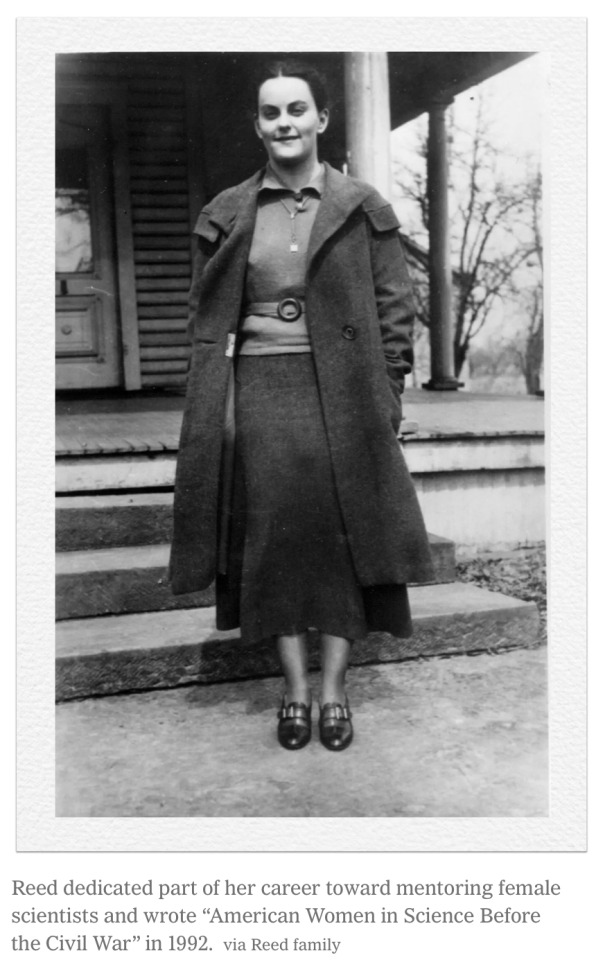
Reed also supported teaching children about science so that they would have the tools to solve what she called the “current crises of exploding populations and deteriorating environments.” She published papers about teaching proper scientific methods in schools and created curriculums with the University of Minnesota.
“Classrooms always house some living organisms,” she wrote, tongue-in-cheek, in the Journal of the Minnesota Academy of Science in 1969. “In many, unfortunately, all are of a single species, Homo sapiens. The population consists of many immature species (children) and a few adults, usually female (teachers). This makes for a certain homogeneity, but it can be alleviated by introduction of other living species, animal or plant.”
The fact that Reed was, like so many of her predecessors, lost to history is indicative of the pervasive sexism of her era. But women today continue to face hurdles in entering scientific fields. A report from the Massachusetts Institute of Technology this year found that “the underrepresentation of women in the science, technology, engineering, and mathematics (STEM) fields continues to persist,” with women making up only 28 percent of the STEM work force.
Like Reed, her daughter, Catherine, was a scientist, having earned a Ph.D. in ecology, but she ultimately became so disillusioned that she held a ceremonial burning of her degree and instead turned to artwork and championing her mother’s legacy. She published her mother’s book on American women in science on her website in about 2010. She died in 2021 at 73.
Elizabeth Wagner Reed died at 83 on July 14, 1996, most likely of cancer. She recognized her symptoms, but, knowing what the treatments would be like and, to her mind, the probable outcome, she never sought a diagnosis. (Sheldon Reed died in 2003.)
William Reed said there was no joy like taking a walk with his mother, who could describe every plant and animal they passed. She and Sheldon were avid bird-watchers (and occasional polka dancers), and the family spent many vacations at Lake Itasca, Minn., relaxing under old-growth Norway Pines.
Reed’s favorite flower was the showy lady’s slipper, the state flower of Minnesota, an orchid notoriously difficult to cultivate, like the careers of many of the women she wrote about. Its Latin name is Cypripedium reginae, with reginae meaning queen.
#Elizabeth Wagner Reed#Women in science#American Women in Science Before the Civil War#Books for women#Eunice Newton Foote#Margaret Rossiter#Matilda Effect#Matilda Joslyn Gage#Woman as Inventor#Marta Velasco Martín#Graduate Women in Science#Maria Mitchell#Ellen Smith Tupper#Mary Townsend
8 notes
·
View notes
Text


Ellen Gulbranson (1863-1947) was one of the great Wagner voices of her time.
Between 1897-1914 she sang all the Brünnhildes in Richard Wagner's Ring at the Bayreuth Festival.
In this photo from 1902 we see the singers in Bayreuth and the original newspaper report praises them in the highest tones.
There are some recordings of her.
#Ellen Gulbranson#Gulbranson#soprano#dramatic soprano#Richard Wagner#Wagner#Mezzo-soprano#Tristan und Isolde#Royal Opera House#Covent Garden#music teacher#music theory#music history#opera#bel canto#classical music#classical singer#voice teacher#pedagogue#aria#diva#primadonna#opera singer#classical studies#Mathilde Marchesi#Giuseppe Verdi#Verdi#Aida#Parsifal#Bayreuth Festival
3 notes
·
View notes
Text
Caleb Martin: The Rising Star Making Waves in the NBA

In the world of professional basketball, Caleb Martin has been making a name for himself with his impressive performances. From his high school days to his college career and(more)
#caleb martin#lebron james#inside the nba#caleb martin all possessions#caleb martin highlights#highlights caleb martin#anthony davis#inside the warriors#in the world#the bigger artist#the incredible story of kayleb wagner | sc featured#rising star#harmonies by the hive#we the best#the dubs#the bully is back#the bully is back he came to the playground#heat waves slowed#the ellen degeneres show#the herd#the hardy's#the ellen show
1 note
·
View note
Text



lost in the dark (Hunger AU) webweave
Created as a tribute to the absolutely incredible fic @definitelynotshouting is writing, up to the current plot beat!
// Sources under readmore //
What is a webweave? Previous art: Third Life | Void Falling | Attempt 33 | Martyn | Limited Life | Nightingale Chapter 1 | Chapter 2 | singing songs to the secrets behind my eye | A Hundred Things We Had Not Dreamed Of | solving counting sheep
Pt. 1: Flutter / Valerie Hammond ◆ Sanssouci Palace + The Black Ice Cream Song edit / @mountainqoats ◆ Excerpt from The Average Fourth Grader is a Better Poet Than You (And Me Too) / Hannah Gamble via @blackberryjambaby ◆ of course i bite textpost / @valtsv ◆ Lie Down / Ellen Jenkins ◆ 27 / Daniil Kharms trans. Matvei Yankelevich ◆ Embrace my Soul / Sergio Borga ◆ Color Changing Magic Potion / DirksenCraft ◆ Fragile Bird / @cocoabats ◆ Holding Onto Black Metal / Debra Baxter ◆ Excerpt from III. The Child / Quinn Newell via @voicedwords ◆ Crawler Pot / Rose Schmits ◆ Metamorph / Gunnel Watkins ◆ Untitled eye / Henrik Aa Uldalen ◆ tumblr guide for chad twitter users (real) / @arahir ◆ the best way to solve problems tweet / @wolfpupy
Pt. 2: Reoccurring Nightmare comic / @deep-dark-fears ◆ Knotted Serpentine / Hannah Russell ◆ Garden + Blues in Dallas edit / @mountainqoats ◆ The Watching Moth / Cady Shaye Poorman ◆ NOCTURNAL Series 11 of 20 / Santiago Caruso ◆ Watching Moth / Cady Shaye Poorman ◆ Afterglow / Pei Wang ◆ Sun in an Empty Room + The Young Thousands edit / @mountainqoats ◆ Study for "Mathematics," "The Sciences" / Kenyon Cox ◆ Hard to Swallow / Debra Baxter ◆ Molly Brodak / Molly Brodak via @kafk-a ◆ 02112022, S.T. / @ryebreadgf ◆ Woman with Red Hood / Alice Pike Barney ◆ Come On, Motherfucker, You Survived! / @selfhealingmoments ◆ Excerpt from The Blind Assassin / Margaret Atwood via @flowerytale ◆ Heirloom II / Cindy Rizza
Pt. 3: Excerpt from The Love Song of J. Alfred Prufrock / T.S. Eliot ◆ i love you. i can't tell you / @/tturing (OP altered, original contents linked) ◆ Hope is the Thing - Sunset Flight / Erica Wagner ◆ Poppies + Nova Scotia edit / @mountainqoats ◆ Untitled (open/end) / Debra Baxter ◆ Excerpt from Alive at the End of the World / Saeed Jones via @geryone ◆ Weeping (Lamentacia) / Dezider Toth via @amare-habeo ◆ NOCTURNAL Series 7 of 20 / Santiago Caruso ◆ Fridge Funerary Epitaph / @catilinas ◆ Untitled (Trail of eyes) / @julialepetit ◆ Stained Glass Hellebore, California Poppy, + Poppy / Jessica Saunders ◆ 世界の声が聞こえるとき (When the voice of the world is heard) / Tomohiro Inaba ◆ Still from Don't make me do this again gif / @cibastion ◆ Excerpt from So I Locked Myself Inside a Star for Twenty Years / Jeremy Radin ◆ Excerpt from Invisible Monsters / Chuck Palahniuk via @quotespile ◆ Potion Bottles / Edited from Panel 1 Source
#hunger au#webweave#web weave#salem tag#salem art#TJ IM SO HAPPY TO BE ABLE TO POST THIS!! YOUR FIC IS INCREDIBLE AND DESERVES ALL THE LOVE FOREVER
441 notes
·
View notes
Video
youtube
Shadow of the Vampire {2000} - Full Horror Film HD
Since the teaser trailer for the Nosferatu remake dropped this morning, here’s a 2000 movie, Shadow of the Vampire. A fictional account of the making of Nosferatu featuring:
Willem Dafoe as Max Schreck/Count Orlok
He is an absolute blast in this role! Tbh, I almost forgot he played Count Orlok in this.
John Malkovich as F.W. Murnau, director of Nosferatu
Equally just as great as Dafoe.
Eddie Izzard as Gustav von Wangenheim/Thomas Hutter/Jonathan Harker
She doesn’t have too much screentime, since the movie is focusing on Murnau and Schreck’s working relationship as director and actor; however, she is also great in this too.
Catherine McCormack as Greta Schroder/Ellen Hutter/Mina Harker
Cary Elwes as Fritz Arno Wagner, the cinematographer
Udo Kier as Albin Grau, occultist; the producer, art director and costumer designer
John Aden Gillet as Henrik Galeen, the screenwriter
#youtube#willem dafoe#john malkovich#eddie izzard#cary elwes#udo kier#nosferatu#shadow of the vampire#movies#vampires#vampire#vampire movies#indie movies#gothic#gothic horror#nosferatu 2024
13 notes
·
View notes
Text
since new night court brought back roz and the wheelers last season, here's everyone else who could conceivably show up in s3:
tony giuliano (ray abruzzo)
quon le robinson (denice kumagai)
patty douglas (mimi kennedy)
joan hobson (janet zarish)
lisette hocheiser (joleen lutz)
benet collins (pam grier) + baby reinhold (literally anyone)
rene robinson + charlie giuliano-sullivan (again could be played by literally anyone)
leon (bumper robinson)
buddy ryan (john astin)
the angel of death (stephen root)
billie young (ellen foley)
lana wagner (karen austin)
donna fielding (susan diol)
margaret turner (mary cadorette)
wanda flinn shannon (cathy mcauley)
sheila (leslie bevis)
#and literally Any One of these characters showing up again would make more sense than christine having a sister no one knew about#not that i didn't love seeing gigi rice but Come On#new night court#night court#if they Do have quon le + rene show up next season nbc owes me residuals bc i did that first#also baby reinhold + joan who showed up in my fic sweetheart deal
10 notes
·
View notes
Text

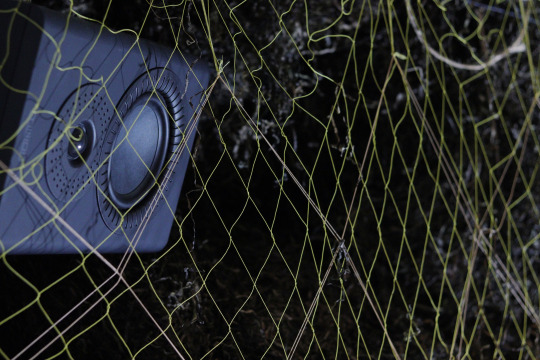


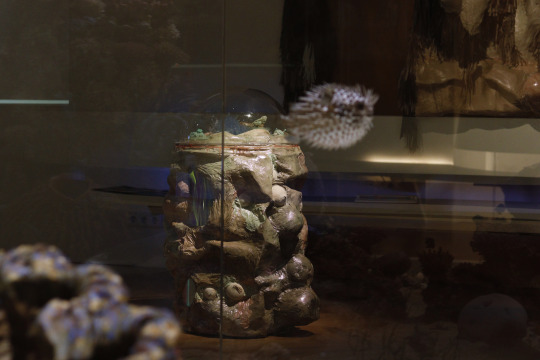
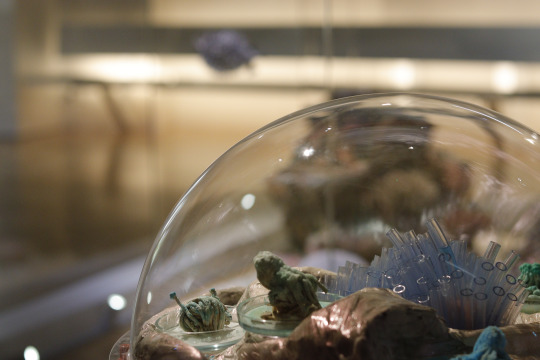
NEXT … @Senckenberg Museum Looking for Medusa
RAUMKLANG-INSTALLATION 5 Kanäle, Mixed Media, Unterwasser-Tonaufnahmen von Korallenriffen (Marsa Nakari und Dolphin House, Rotes Meer, Ägypten), Schiffsverkehr (Frankfurt a.M.), Ärmelkanal (Alabasterküste). weitere Tonaufnahmen: Backpulver-Wasser-Reaktion, heißes Öl, Eiswürfel, Kristallglas/Wasser, Kaulquappen, Regen auf Polyamid u.v.m., Synthesizer, Melodica, Sansa. Keramik/Gips mit Kalk-/Salzverbindungen, organisches und synthetisches Leder/Textil, Gummi, Seegras, Yogamatten, Schleppnetze.
-- Führung für Mitglieder mit Linda Weiß, Nina M.W. Queissner und Ellen Wagner
Mittwoch, 26. Juli 2023, 17:30 Uhr
Ausgehend von antiken Mythologien über Korallen vereint die Arbeit von Linda Weiß und Nina M.W. Queissner Skulptur und Klang. Faszination und Gefährdung des Riffs spiegeln sich in einer Rauminstallation, die zugleich als künstlerisch gestalteter und experimenteller Lebensraum auftritt. Betrachter*innen sind eingeladen zu spekulieren, wie Korallen in der Zukunft leben könnten. Die Führung mit den Künstlerinnen sowie der Kuratorin Ellen Wagner gibt Einblick in die künstlerische Recherche und Materialforschung und lädt zum Austausch ein.
#senckenberg museum#frankfurt#exhibition#ellen wagner#nina mw queissner#linda weiß#looking for medusa
4 notes
·
View notes
Text

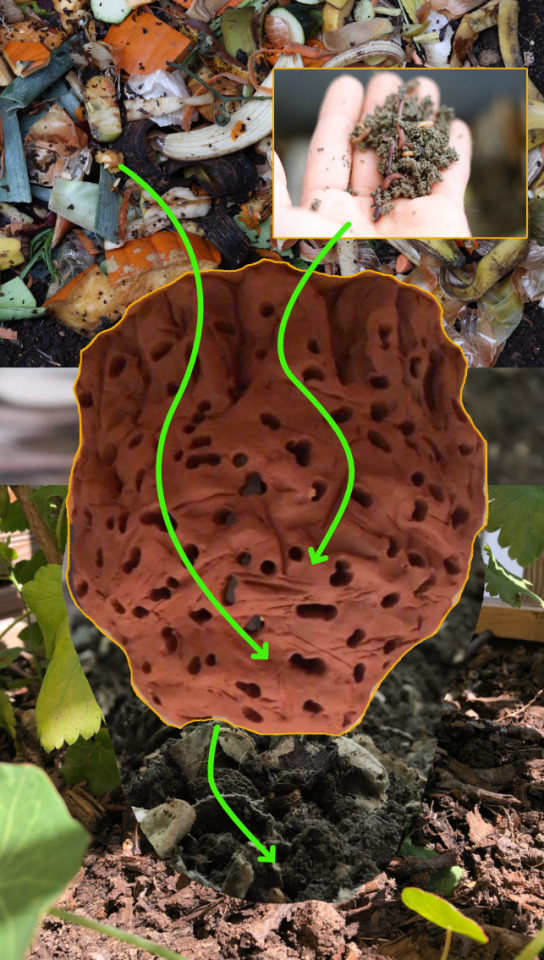

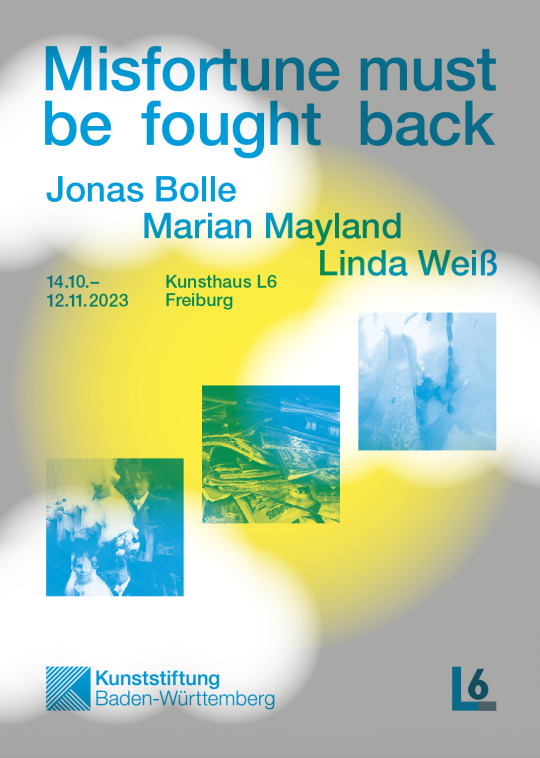
Ausstellung Looking for Medusa w/ Nina MN Queissner. Senckenberg Naturmuseum – 01.06.23 – 15.01.24 Infos Presse Blog Film-Screening Hydrozonen I : Uferferne am 30.09.23, 19:00 (begleitend zu Looking for Medusa)
Hausputz! Und andere Visionen für das Museum Kurhaus Kleve w/ Blockadia*Tiefsee – 18.06.–03.10.2023
Save the date : Misfortune must be fought back, L6, Freiburg, w/ Marian Maryland, Jonas Bolle, Opening: 13.10.2023
#senckenberg museum#linda weiß#nina mw queissner#ellen wagner#museum kurhaus kleve#exhibition#freiburg#l6#marian mayland#jonas bolle
0 notes
Text
Jump Wins By Dancer
17 Wins: Cami Vorhees
11 Wins: Kayla Mak
8 Wins: Brady Farrar, Brooklyn Simpson, Kya Massimino, Madison Taylor, Vivian Ruiz
7 Wins: Ella Horan, Kamryn Funk, Nicholas Bustos, Ying Lei Pham
6 Wins: Crystal Huang, Hailey Meyers, Katie McCleary, Kayla LaVine, Lily Gentile, Lola Iglesias, Rachel Quiner
5 Wins: Ava Brooks, Brooklyn Cooley, Christina Ricucci, Elizabeth Scott Lanier, Ellary Day Szyndlar, Giselle Gandarilla, Gracyn French, Isabella Jarvis, Jonathan Wade, Kaylin Maggard, Kylee Casares, Lucy Vallely, Mariana Rodriguez, Olivia Alboher, Sarah Moore, Sophia Lucia
4 Wins: Aimee Brotton, Ali Ogle, Ana Maria Zertuche, Ava Wagner, Avery Gay, Cambry Bethke, Camille Cabrera, Campbell Clark, Carly Thinfen, Christian Burse, David Keingatti, Destanye Diaz, Eliana Hayward, Emma Sutherland, Hailey Bills, Halle Lum, Izzy Howard, Jackson Roloff-Hafenbreadl, Jaycee Wilkins, Jayci Kalb, Kelsie Jacobson, Kensington Dressing, Lauren Yakima, Logan Epstein, Madalin Autry, Makaia Roux, Makayla Ryan, Mary Jordan Clodfelter, Mila Simunic, Patricio Lopez, Rosie Elliott, Sabine Nehls, Scott Autry, Sophia Frilot, Sophie Garcia, Stella Brinkerhoff, Sylvia Borash, Talia Gabriel, Taylor Worden, Tim Blankenship, Valadie Cammack
3 Wins: Addison Moffett, Aimee Smyke, Ali Deucher, Allie Andrew, Alyssa Robert, Amy Benedetto, Avery Lau, Bostyn Brown, Braylynn Grizzaffi, Britton Johnson, Brooke Cheek, Brooke Cox, Brooke Toro, Caden Hunter, Caitlyn Polis, Camila Cordero, Candace Vincent, Casey Tran, Chau, Chloe Madding, D'Angelo Castro, Dasha Waldemer, Dyllan Blackburn, Ella Dobler, Ella Jones, Ellen Grace Olansen, Emma York, Erin Bailey, Esme Chou, Findlay McConnel, Fiona Sartain, Fiona Wu, Grace Lethbridge, Harper Anderson, Hayden Hopkins, Hudson Pletcher, Isabel Ulloa, Isabella Lynch, Isabella Vorhees, Isabella Weidmann, Jazmine Raine Werner, Jessica Ferretti, Josie Lutz, JT Church, Justin Pham, Keagan Capps, Keely Meyers, Keira Redpath, Kennedy Anderson, Lauren Shaw, Libby Borash, Lindsey Weaver, Logan Hernandez, Lucia Piedrahita, Mackenzie Meldrum, Maddie Ziegler, Maria Jose Gonzalez, Mariandrea Villegas, Marion Norris, Michelle Quiner, Mini Preston, Miyah LaGrant, Morgan Higgins, Neala Murphy, Nicole Ishimaru, Payton Schultz, Preslie Rosamond, Rachel Louiselle, Reegan Francis, Regina Lozano, Ricky Ubeda, Ruby Castro, Samantha Falk, Savannah Folding, Savannah Manning, Savannah Manzel, Scarlett Ferrell, Selena Hamilton, Sidney Ramsey, Sienna Morris, Sylvie Win Szyndlar, Tessa Marr, Vera Escamilla
17 notes
·
View notes
Text
Tarot Books List - part one
1-2-3 Tarot: Answers in an Instant Donald Tyson 101 Tarot Spreads Sheilaa Hite 21 Ways to Read a Tarot Card Mary K. Greer 22 Paths of Inperfection Matt Laws 360 Degrees of Wisdom Lynda Hill 365 Tarot Activities Deanna Anderson 78 Degrees of Wisdom Rachel Pollack 90 Days to Learning the Tarot Lorri Gifford A Guide To Mystic Faerie Tarot Barbara Moore A Guide to Tarot and Relationships Dolores Fitchie & Andrea K. Molina A Guide to the Nomadic Oracle Jon Mallek A Keeper of Words Anna-Marie Ferguson A Sephirothic Odyssey Harry Wendrich & Nicola Wendrich A Wicked Pack of Cards Michael Dummett & Ronald Decker & Thierry Depaulis A Year in the Wildwood Alison Cross Absolute Beginner's Guide to Tarot Mark McElroy Alchemy and the Tarot Robert M. Place All Love Goes Before Me Stewart S. Warren An Introduction to Transformative Tarot Counseling Katrina Wynne Ancient Mysteries Tarot: Keys To Divination And Initiation Roger Calverley Angel Readings for Beginners Elizabeth Foley Animals Divine Companion Lisa Hunt Best Tarot Practices Marcia Masino Beyond the Celtic Cross Paul Hughes-Barlow & Catherine Chapman Book of Thoth Aleister Crowley Brotherhood Tarot Companion Patric Stillman aka Pipa Phalange Buddha Tarot Companion Robert M. Place Chakra Wisdom Oracle Toolkit Tori Hartman Choice Centered Relating and the Tarot Gail Fairfield Chrysalis Tarot Holly Sierra & Toney Brooks Complete Guide to Tarot Illuminati Kim Huggens Confessions of a Tarot Reader Jane Stern Conscious Channeling From the Akashic Rozàlia Horvàth Balàzsi Creator's Tarot Nicole Richardson Daily Spread Tarot & Oracle Journal Alyssa Montalbano Dark Goddess Tarot Companion Ellen Lorenzi-Prince Designing Your Own Tarot Spreads Teresa Michelsen Destiny's Portal Barbara Moore Deviant Moon Tarot Patrick Valenza Discovering Runes Bob Oswald Discovering Your Self Through the Tarot Rose Gwain Easy Tarot Ciro Marchetti & Josephine Ellershaw Easy Tarot Guide Marcia Masino Easy Tarot Reading Josephine Ellershaw Encyclopedia of Tarot Volume IV Stuart Kaplan & Jean Huets Enochian Tarot Betty Schueler & Sally Ann Glassman & Gerald Schueler Essence of the Tarot: Modern Reflections on Ancient Wisdom Megan Skinner Explaining the Tarot Thierry Depaulis & Ross Caldwell & Marco Ponzi Explore the Major Arcana Judyth Sult & Gordana Curgus Exploring the Tarot Carl Japikse Fortune Stellar Christiana Gaudet Fortune's Lover: A Book of Tarot Poems Rachel Pollack Going Beyond the Little White Book Liz Worth Good Cat Spell Book Gillian Kemp Guide to the Sacred Rose Tarot Johanna Gargiulo-Sherman Heart of Tarot Amber K Hieros Gamos: Benediction of the Tarot Stewart S. Warren Holistic Tarot Benebell Wen Integral Tarot: Decoding the Essence Suzanne Wagner It's All in the Cards: Tarot Reading Made Easy John Mangiapane Jung and Tarot Sallie Nichols Kabbalistic Tarot Dovid Krafchow Kaleidoscope Tarot Leisa ReFalo Karmic Tarot William C. Lammey Learning Tarot Reversals Joan Bunning Learning the Tarot Joan Bunning Light-Of-Day: Tarot & Dream Work - A Practical Guide Gigi Miner Magic Words: A Dictionary Craig Conley Meditations on the Tarot Anonymous Messages from the Archetypes Toni Gilbert, RN, MA, HNC Mirror of the Free Nicholas Swift My Tarot Journal Katrina de Witt Mystical Origins of the Tarot: From Ancient Roots to Modern Usage
#tarot cards#free tarot#tarot reader#tarot community#tarocchi#tarot spreads#tarot reading#tarot#tarotblr#divination#tarot books list#tarot books#book list
21 notes
·
View notes
Text
Rácz András (Az eddigi legjobb értékelés)
Tíz tanulság a tegnapi események kapcsán:
.1)Prigozsinnak vége. A tegnapi nap folyamán elvesztette az üzleti birodalmát, a pénzét (csak a szentpétervári központban négymilliárd rubel készpénzt (!) találtak a házkutatás során), a média-felületeit, a magánhadseregét és az önállóságát is. Az majd kiderül, hogy pontosan milyen jövő vár rá Belaruszban – vagy máshol - , de számára „a trónok harca” véget ért.
.2)Tegyük hozzá: a tegnapi nap lehetséges végkifejletei közül valószínűleg ez volt a legjobb. Prigozsin győzelme azt jelentette volna, hogy egy olyan ember szerez meghatározó befolyást, aki nemcsak normálisan tartotta, hogy a dezertálással próbálkozó harcosait nagykalapáccsal végzik ki, hanem ezzel még dicsekedett is. Elnök természetesen nem lehetett volna belőle (ennek van egy alkotmányos folyamata, amit teljesen nem lehet megkerülni), de ha erővel el tudta volna érni a két fő ellensége, a védelmi miniszter és a vezérkari főnök leváltását, az sem lett volna jó. Nem azért, mert akár Sojgu, akár Geraszimov különösebben kedvelhető vagy hatékony vezetők volnának, hanem azért, mert ez azt jelentette volna, hogy az orosz állam annyira meggyengül, hogy fegyveres felkelők kormányátalakítást tudnak kikényszeríteni.
.3)A történet legnagyobb vesztese ezzel együtt Vlagyimir Putyin és az a putyini elit, amely a hozzá fűződő kapcsolatra építette a hatalmát és befolyását. Az orosz állam és annak irányítása ugyanis tegnap tragikusan leszerepelt. Olyan a második világháború óta nem történt, hogy egy nem állami fegyveres erő több, mint nyolcszáz kilométert (!) masírozzon Oroszországban anélkül, hogy érdemi ellenállásba ütközött volna. Az orosz állam pedig látványosan képtelen volt bármit is tenni, azt leszámítva, hogy udvariasan félreállt az útból és a belorusz diktátort kellett megkérnie, hogy közvetítsen.
.4)Nem az erő hiányzott az ellenálláshoz elsősorban, amennyire rekonstruálni lehet, hanem a határozott döntési képesség. Technikailag megállítható lett volna a wagneres konvoj. Fel lehet ásni keresztben az autópályát (ez is csak késő délután jutott eszébe valakinek), szét lehet szedni a hidakat (ezt végül csak az Oka folyó hídjánál tették meg, nem sokkal Moszkva előtt), ki lehet szórni acéltüskéket, ami megállítja a gumikerekes járműveket, stb. És ugye ott vannak még az erőszakos lehetőségek is, a légierő harci helikoptereitől a támadó drónokon át a Roszgvargyija egységeiig és a tulai elit légidesszant-hadosztályig, akik jelentős része nincs Ukrajnában. Amennyire ismerni lehet az orosz rendszer működését, nem az esetleges polgári áldozatok volt a fő probléma: a Prigozsin-féle menet kezdetén a légierő gond nélkül lőtt szét egy emberekkel teli autóbuszt és szórványosan utána is támadta a wagneresek járműveit az autópályán. A határozott döntés hiányzott, hogy pontosan mi legyen a cselekvés iránya.
.5)Határozott döntés hiányában pedig a helyi kormányzók az egyetlen dolgot tették, amit racionálisan tehettek: kivárták, míg elvonul a vihar, igyekezve minimalizálni a területüket ért károkat és veszteségeket. Nem álltak ellen, hanem próbálták a polgári lakosságot távol tartani a wagneresek útjából, ami nagyjából sikerült is. Mind a rosztovi, mind a voronyezsi, mind a lipecki megye jól szerepelt: minimális infrastrukturális károkkal megúszták.
.6)A határozott döntés hiánya rövid távon a legnagyobb közvetlen károkat a hadseregnek okozta: Prigozsinék lelőttek legalább hat helikoptert és egy repülőgépet. Ez legalább 12-15 főnyi, jól képzett személyzetet és sokmilliárdos kárt jelent…. és ezt a tegnap esti, Lukasenko által közvetített megállapodásnak köszönhetően várhatóan teljesen büntetlenül megússzák. Ennyire az orosz haderőt nagyon régen alázta meg bárki is.
.7)Igazán azonban a Kreml a nagy vesztes. Kiderült, hogy a mindig határozottnak, higgadtnak és rettenthetetlennek beállított Putyin valójában képtelen kezelni egy hirtelen kitörő, váratlan válságot. És még csak nem is rossz döntéseket hozott, hanem vagy egyáltalán nem hozott döntést, vagy egymásnak ellentmondó döntéseket hozott – ezt ugye tényszerűen nem tudjuk, de azt igen, hogy az orosz állam megbénult az események hatására, miközben egy határozott kremli iránymutatás mellett ennek az ellenkezője kellett volna, hogy történjen. Lehetséges, hogy Prigozsinnak egy korábbi, gúnyos megjegyzése a bunkerben lapuló vénemberről (бункерний дед) nem is volt annyira téves.
A nap végére ugyanis eljutottunk a reggeli dühös és kemény Putyin-beszédtől (amely hátba szúrást emlegetett és szigorú felelősségre vonást követelt) oda, hogy a lázadók szabadon távozhatnak, sőt, egy részük még az orosz védelmi minisztériummal is szerződést köthet. A Prigozsin-féle bejelentések arról, hogy „a polgárháború megkezdődött” és „estére új elnökünk lesz”, mintha meg sem történtek volna. A reggel elindított, évtizedes börtönbüntetéssel fenyegető eljárás fegyveres felkelés szervezése miatt estére be is fejeződött, Prigozsint felmentették. Sokatmondó, hogy Putyin este meg sem szólalt, helyette a szóvivő, Dmitrij Peszkov közölte a deal hírét a nyilvánossággal. (Az pedig csak hab a tortán, hogy külön TASSZ közleményben kellett bizonygatni, hogy az elnök természetesen nem hagyta el Moszkvát – annak ellenére sem, hogy az általa használt különleges repülőgépek bizony távoztak a fővárosból.)
.8 ) A tegnapi események megmutatták a putyini elitek lojalitásának határait is. Egyik oldalról igaz ugyan, hogy egyetlen érdemi szereplő sem állt a lázadók mellé – de az elit tagjai közül nagyon sokan nagyon gyorsan elmenekültek Moszkvából (sokan az országból is), ami azt mutatja, hogy szembefordulni ugyan nem mertek Putyinnal, de kockáztatni sem akartak érte semmit. És láthatóan reálisnak tartották azt a veszélyt, hogy az orosz állam TÉNYLEG nem tudja megállítani a lázadókat. Márpedig a legfelsőbb elit tagjai azok, akik mindenkinél jobban ismerik Putyint és az ő valós erejét – vagy annak hiányát.
.9) Bár a hosszú távú következtetésekkel óvatosnak kell lenni, de azt hiszem, nem túlzás azt mondani, hogy a történtek újra nyílttá tették a 2024 tavaszi elnökválasztás esélyeit. Három nappal ezelőttig az volt a legvalószínűbb forgatókönyv, hogy Putyin újra elindul és nyilván újra elnök is lesz, tehát még legalább további hat évnyi Putyin-korszakra kell készülni (nyilván akkor, ha a biológia közbe nem szól). A tegnapi nap után viszont egyáltalán nem biztos, hogy ez a verseny tényleg olyan lefutott lesz, mint amilyennek korábban gondoltuk. Amitől persze még simán nyerhet újra Putyin – de ez most jóval kevésbé tűnik biztosnak, mint egy héttel ezelőtt.
Összességében a helyzetet most úgy látom, hogy míg „a trónok harca” Prigozsin számára véget ért, Putyin és a putyini elitek számára most kezdődik csak igazán.
.10) Mindebből az is következik, hogy mindazoknak, akik akár Oroszországban, akár külföldön a Putyinnal való kapcsolatra alapozták a politikai-üzleti stratégiájukat, célszerű ezt átértékelniük, vagy legalább felkészülniük alternatív forgatókönyvekre is.
Kiderült az is, hogy az orosz jogrendszerben bármi és annak az ellenkezője is meg tud történni akár egyetlen napon belül, még olyan súlyú ügyekben is, mint a fegyveres felkelés. Ez szintén az oroszországi elköteleződés újraértékelésére kellene, hogy sarkalljon bizonyos szereplőket, adott esetben akár anyagi veszteségek felvállalása árán is.
Végezetül, mivel valószínűleg újra nyílttá válik a 2024-es elnökválasztás kimenetele, célszerű volna a hazai szereplőknek végre érdemi erőforrásokat fordítani az orosz belpolitika értelmezésére és elemzésére, rendesen feltérképezve a meghatározó szereplőket és köreiket, stb. Erős ugyanis a gyanúm, hogy hamarosan szükség lesz erre a tudásra.
18 notes
·
View notes
Text
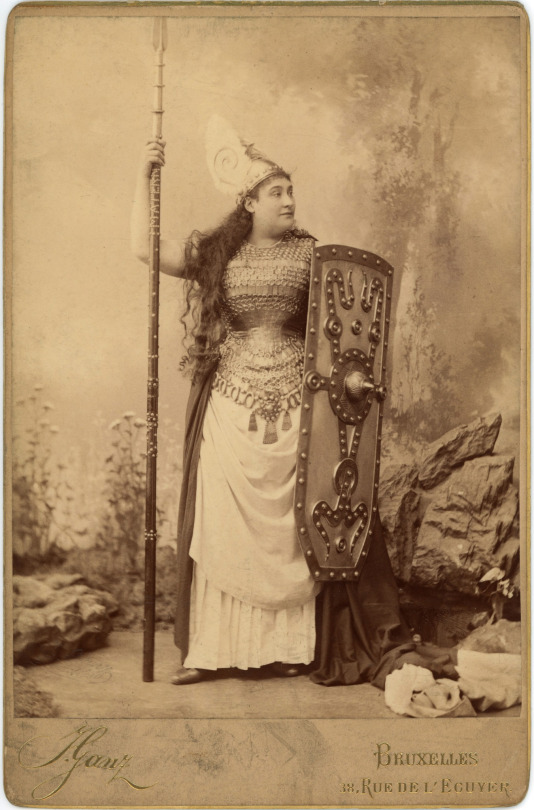


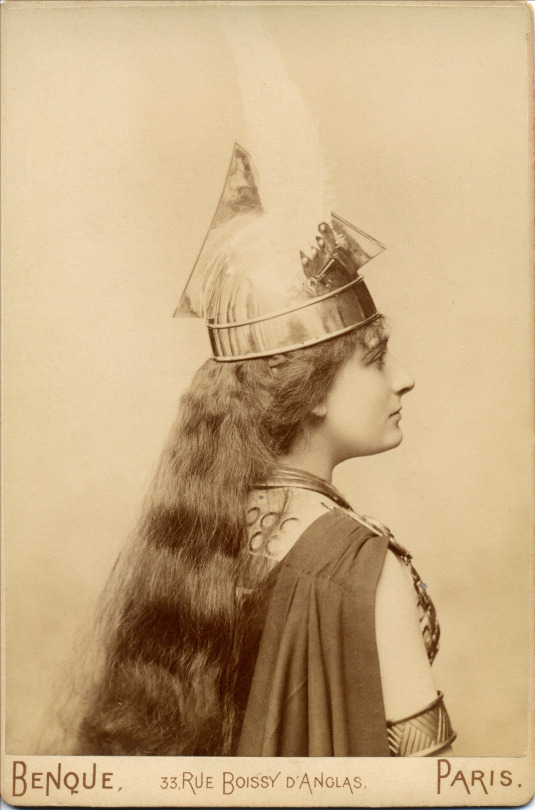



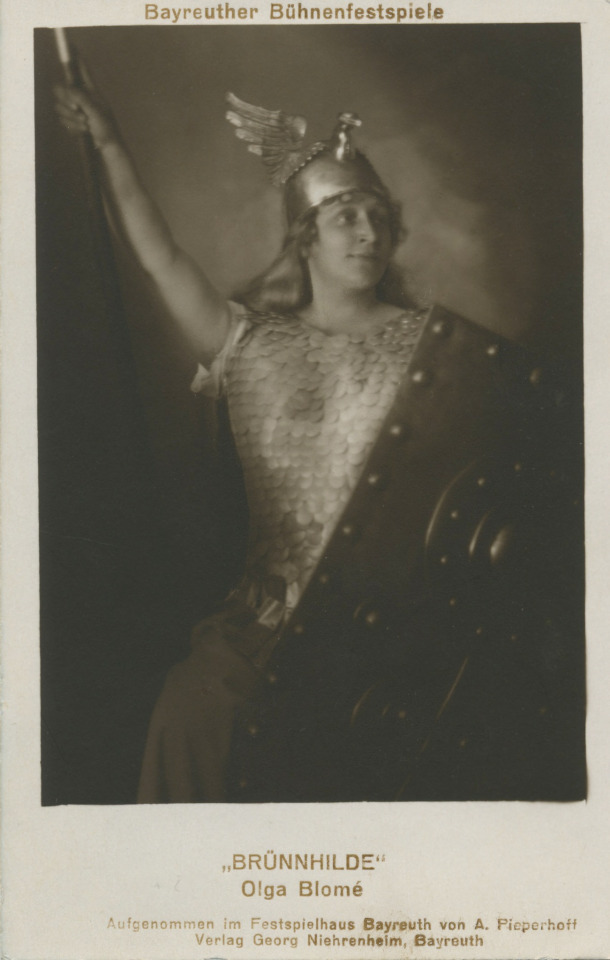
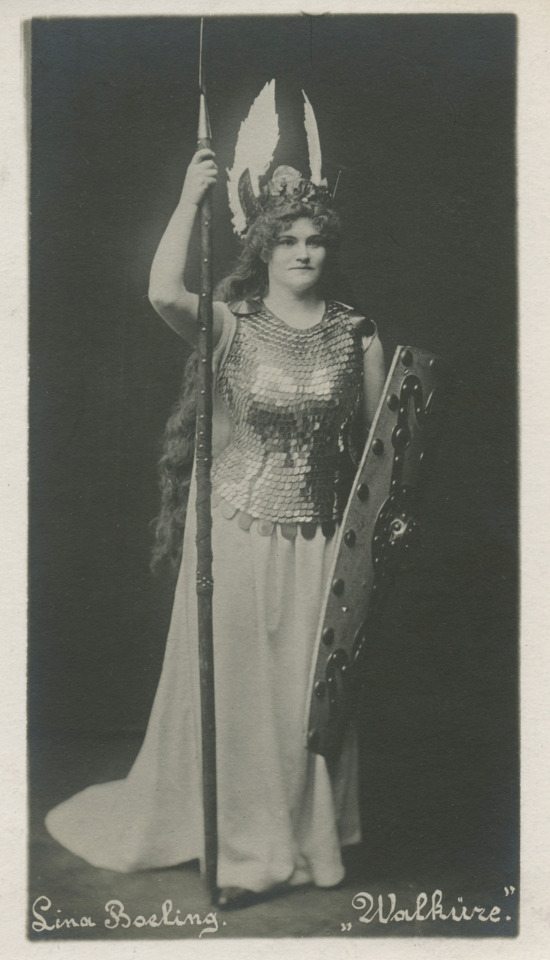



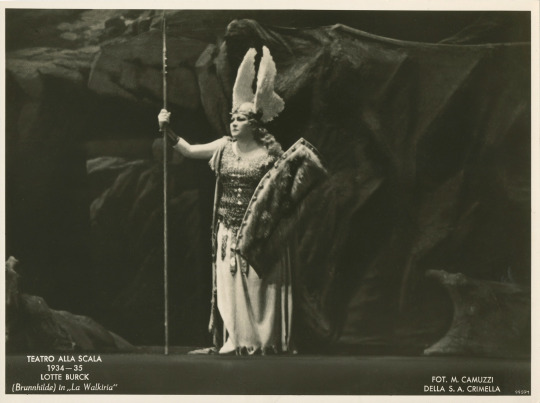
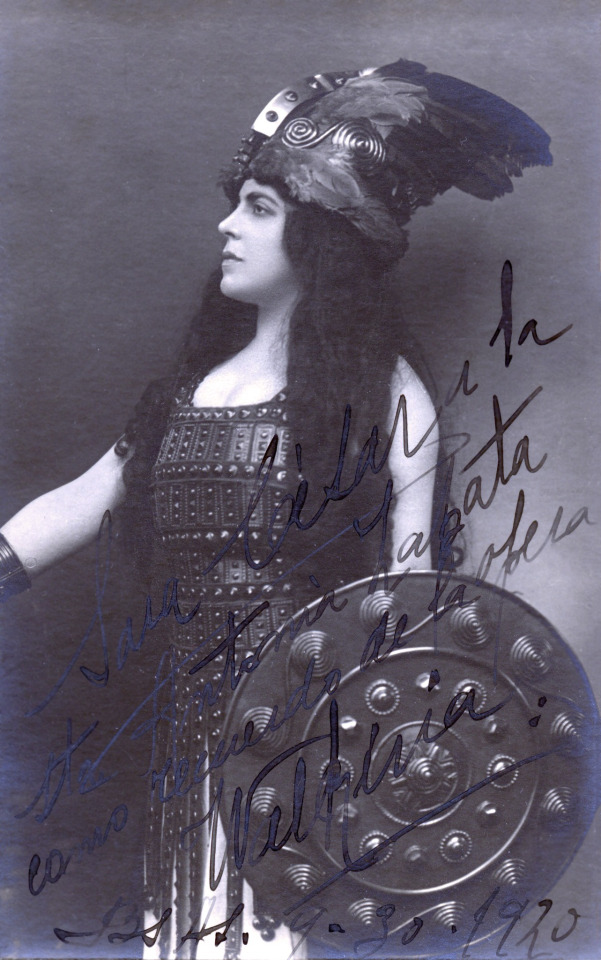


„WALKÜRE“ R. Wagner / SECOND and THIRD ACT
Some Brünnhildes
Amalie Materna as Brünnhilde; Bruxelles, 1889
Pauline Mailhac as Brünnhilde; Karlsruhe, 1891
Ellen Gulbranson as Brünnhilde; Bayreuth, 1902
Lucienne Breval as Brünnhilde; Paris, ca. 1900
Anna Bahr-Mildenburg als Brünnhilde; Vienna, ca. 1900
Laure Berge as Brünnhilde; Bruxelles, ?
Elise Beuer als Brünnhilde; ?, ?
Olga Blomé as Brünnhilde; Bayreuth, 1924
Lina Boeling as Brünnhilde; ?, ?
Helena Braun as Brünnhilde; Munich, ?
Gertrud Bindernagel as Brünnhilde; ?, ?
Berthe Briffaux as Brünnhilde; Antwerpen, 1932
Lotte Burck as Brünnhilde; Milan, 1932
Sara Cesar as Brünnhilde; Rome, 1920
Sofie Cordes-Palm as Brünnhilde; ?, ?
Erna Denera as Brünnhilde; Berlin, ?
#classical music#opera#music history#bel canto#composer#classical composer#aria#classical studies#maestro#chest voice#Die Walküre#The Valkyrie#Richard Wagner#Wagner#Der Ring des Nibelungen#The Ring of the Nibelung#Norse mythology#Völsunga saga#Poetic Edda#classical musician#classical mythology#classical musicians#classical voice#classical history#history of music#historian of music#musician#musicians#music education#music theory
35 notes
·
View notes
Note
What kind of music do you typically listen to? Are there any musicians that have inspired or influenced your work in any way?
I pretty much answered this one here back at the end of 2023. For an update and more specific answer to your question about inspiration: lately, I've been trying to listen to at least period-specific music as I work on the Invisible College research and preparation, like Beethoven and Chopin paired with the Romantics, some Wagner with Shaw, Rachmaninov with Conrad, etc. I'll make an attempt at Schoenberg when I get to Beckett for the full Adorno trip. The algorithm has really been insisting on Sibelius lately, however, which I'm guessing Adorno would call fascist. (I never read Adorno's music criticism, though I studied—mainly visual art and literature—with one of its distinguished translators.) Also, speaking of fascism, even though I gave Dune: Part Two a bad review, I have been listening to that soundtrack for better or worse; this is a plebeian taste, I'm sure, or maybe "Reddit" or whatever other insult, but I like a lot of the ambient soundtrack music popular on YouTube: Zimmer, Einaudi, Richter, that style of material. For some reason, maybe also algorithmic, I lately went back to that electronica group I remembered from the '90s, VNV Nation, and was interested to see they had some new material; this has been a recent favorite, somewhat relatable lyrics if you ask me. Speaking of the '90s or even the '80s, I listened to a lot of music from that era when I was writing Major Arcana last year to create the appropriate late-20th-century Dark-Age-of-Comics mood, everything from Joy Division and The Smiths up through Portishead and Massive Attack and the like, and Americans, too, my melodramatic preference for Tori Amos and the Smashing Pumpkins being well-known to my regular readers, as well as "Malibu"-era Hole (even if she [allegedly] did kill Kurt, I like "Malibu" better than any of his stuff). That and some of the jazz favored by my character Ellen Chandler, especially Sketches of Spain and A Love Supreme, which are thematically crucial to the novel. What else? I'm excited for the apparent Joanna Newsom revival-comeback. She might be the most inspirational musical artist of my generation just by her example: create your own strange world, and listeners will come. (I wrote a little tribute to her on here a few years ago.) The aforementioned algorithm knows I compared Lana to Shakespeare 10 years ago—she had to forgive the rest of you for how you treated her; she didn't have to forgive me!—so I usually happily let it give me all the visionary "sad girls" past and present. But, and just in case this was a subtext of your question, there being so few ways nowadays to draw the line between macroculture and meso- and microcultures, I must halt at the frontier of Ms. Swift's empire.
2 notes
·
View notes